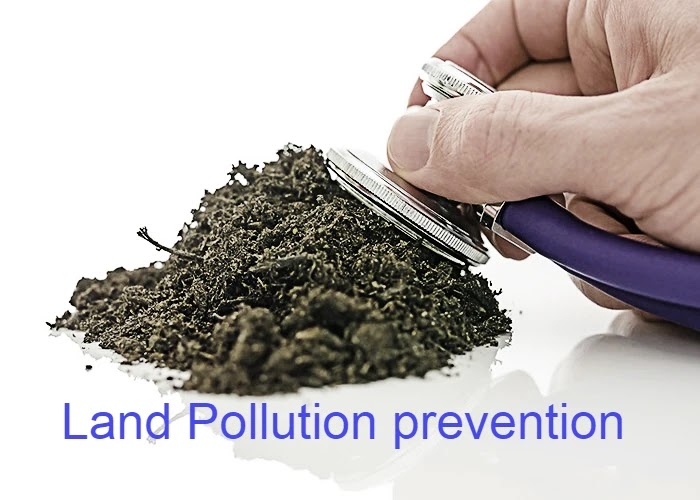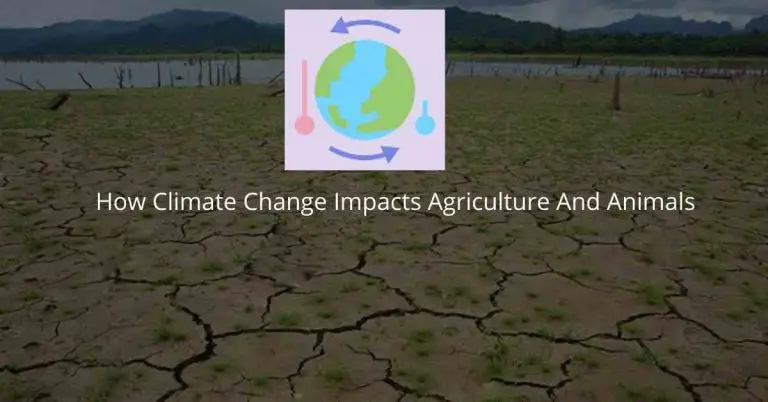Land Pollution prevention and solution

The land is the basic unit of the environment. Large-scale industrialization, urbanization, increasing population in cities, and liquid and solid waste are polluting the soil. Land pollution is spreading due to solid waste. By the way, land pollution is a global problem. Today we will discuss some important topics of prevention and solution of land pollution.
Solid waste is often generated from homes, animal sheds, industry, agriculture, and other places. Its heap takes the form of mounds containing ash, glass, fruits, vegetables, paper, clothes, plastics, rubber, leather, eggs, sand, metals, animal waste, dung, etc. when hazardous chemicals such as sulfur are spread. , And Lead compounds in the air are mixed with the land. Hence land pollution spreads.
How to stop Land pollution- (Land conservation)
Soil is an invaluable natural resource on which everyone depends. In an agricultural country like India, where soil erosion is a serious problem, soil conservation is a necessary task.
Soil conservation is a process by which efforts are made not only to maintain soil quality but also to prevent land contamination.
Pollution reduces soil fertility, including loss of soil nutrients, loss of organic matter, and the soil’s ability to retain nutrients and water. There are two methods of land conservation: 1- biological method, 2- mechanical method
(1) Biological method :
(i) Related to crops, (ii) Related to forests
(i) Related to crops:
- Crop rotation: this means changing the crop continuously in the same area of land in a given period of time. Crops such as wheat + mustard, kidney bean + peanut, corn + cowpea, etc. they can be grown simultaneously. In this way, after one crop, another crop is grown immediately so that the soil does not deteriorate by remaining open.
- Planting from the corners: mythical plants, cowpea crops, and cereals can be cultivated in a specific way to avoid soil erosion. This provides farmers with more benefits from minimal investment and increases soil fertility.
- Strip cultivation: this reduces the speed of water flow and prevents erosion.
- Steep cultivation: avoids erosion by reducing mud. Hill land is used for this type of agriculture.
- Crop residues: erosion and evaporation of the layer can be avoided by applying a thin layer of 10-15 cm crop residues during cultivation. The Rabi culture can grow up to 30 percent by this method. After harvest, we must leave the peg in the area so that non-seasonal rain and wind cannot cause much damage.
- Protective belt: by planting trees and shrubs in the correct way, depending on the wind direction, the turbulence caused by the wind can be avoided.
- Use of fertilizers: the use of cow manure, green manure, and other organic fertilizers reduces soil erosion.
(ii) Related to forests
Forests are very useful to prevent soil erosion. There are two functions below this:
First, forests must be developed in new areas to increase fertility and soil capture. This reduces erosion of the soil by rainwater and wind.
Second, forests should develop in a new place where excessive contamination, an excessive amount of forage is fed to animals, and a decrease in soil productivity.
(2) Mechanical method :
This method is relatively expensive but very effective.
- Contour holding system: In this method, fields are planted in the tilt direction so that the water flowing between the slopes does not destroy the soil.
- Dam manufacturing: dams located on slopes prevent erosion in very steep spaces.
- Street control: (i) prevent floodwater (ii) increase the vegetation cover and (iii) create new routes for runoff.
Government efforts for land conservation.
Soil erosion reduces sealing at the soil surface, decreases the rate of soil leakage, and increases the rate of runoff. There are many areas around the world where landslides have severely degraded soil quality and made the soil unsuitable for crop production. Various steps were taken in this direction with the introduction of the first five-year plan in India. With the help of remote sensing technology, the area prone to this problem is identified.
A national-level introduction to forest science has been introduced in various fields. It also includes social forest science. The Indira Gandhi Canal Project, the Desert Development Program, and the Westland Plantation Research Center, etc. have been started in Rajasthan.
Jhoom agriculture, traditional metamorphic agriculture, or rotational agroforestry, has been introduced in the northeastern states, Andhra Pradesh and Orissa with 100% central assistance. In addition to this, many programs are carried out directly and indirectly for soil conservation.
Role of organic farming for the prevention of land contamination.
Organic farming is a good option to reduce soil pollution. If the fertile capacity of the land decreases, then the day is not far when the problem of getting food will become common. To avoid this, we should try to protect the environment and prevent land pollution. We should encourage agriculture where there is no harm to the environment.
Today, chemical fertilizers and pesticides are widely used in most industrial agriculture. Although many types of pollutants are responsible for destroying the fertility of the soil, the excessive use of chemical fertilizers is one of the main reasons.
Chemical fertilizers like phosphates, nitrogen, and other chemicals are polluting the earth’s environment and groundwater resources. The most dangerous pollutants are bioactive chemicals, which are destroying the climate and soil microbes, resulting in decreased soil quality. Toxic chemicals enter the diet chain to reach the main food consumer.
The use of organic chemicals has increased 11 times in the last thirty years. Around 100,000 tons of biochemicals are used in India each year alone. Organic agriculture is the best way to reduce the use of these chemicals and reduce land contamination.
Organic agriculture uses bacterial manure nutrients such as manure, green manure, organic manure, bio-pesticides, and bio-fertilizers instead of chemical fertilizers and pesticides. Due to this, the fertility of the land remains for a long time, and environmental and land pollution is Prevention and the farmers also benefit in increasing the quality of the crop.
In many areas of the country, farmers have gradually adopted organic farming, which has increased the quality of their crops and more than doubled their profits. Farmers in Madhya Pradesh, Sikkim, Tamil Nadu, Rajasthan, and Punjab have started a campaign to adopt organic agriculture to make the environment clean and safe in some areas.
Land Pollution prevention measures
- There must be strict provisions for waste collection and disposal.
- Disposal of waste must be done properly and proper factory waste management is required before coming into contact with land.
- The use of chemical fertilizers should not be encouraged.
- Do not throw plastic bags, etc. on the road.
- Priority should be given to waste management by municipal councils and municipal agencies.
- Littering on the roads should be declared a crime.
- The general public should be informed about the ill effects of soil contamination.
- People should be motivated to put the litter box in the house and villagers should throw it in fertilizer pits.
- To avoid soil erosion, planting methods, dams, etc. should be used.
- Development of new pesticides intended to destroy bacteria other than pests.
- Greater use of organic manure and mild pesticides in agricultural activities should be ensured.
- To avoid soil erosion, more and more green grass should be planted.
- Appropriate measures must be taken for the management of waste derived from industrial units. Municipalities must establish strict rules for garbage disposal.
- New technology (a variety of rainwater harvesting) should be used to increase the level of groundwater.
- Farmers must be motivated not to burn agricultural residues in the accounts.
- The use of biotechnology must be guaranteed. The government and NGOs must form a joint association to form a comprehensive strategy on this and raise awareness among the people.
- Limit the use of chemicals and adopt integrated pest management.
- Integrated plant nutrient management should be used in place of chemical fertilizers.
- Chemical soil reformers like gypsum and pyrites suggested by scientists should be used to improve salinity soils.
- The drainage system is very important to address the water problem in agricultural fields.
- For the conservation of soil nutrients, soil conservation systems should be adopted by restricting forest degradation.
- It is necessary to formulate and implement the necessary schemes to protect the lands destroyed by floods.
- It is very important to focus on land use and crop management.
- Use organic compost instead of chemical fertilizer, paper instead of plastic, jute instead of cotton or polyester fabric.
- Plant more trees, stop the flow of garbage in green plants and rivers.
- After following all the laws related to chemicals, we can reduce chemical pollution to a great extent.






